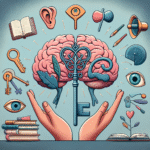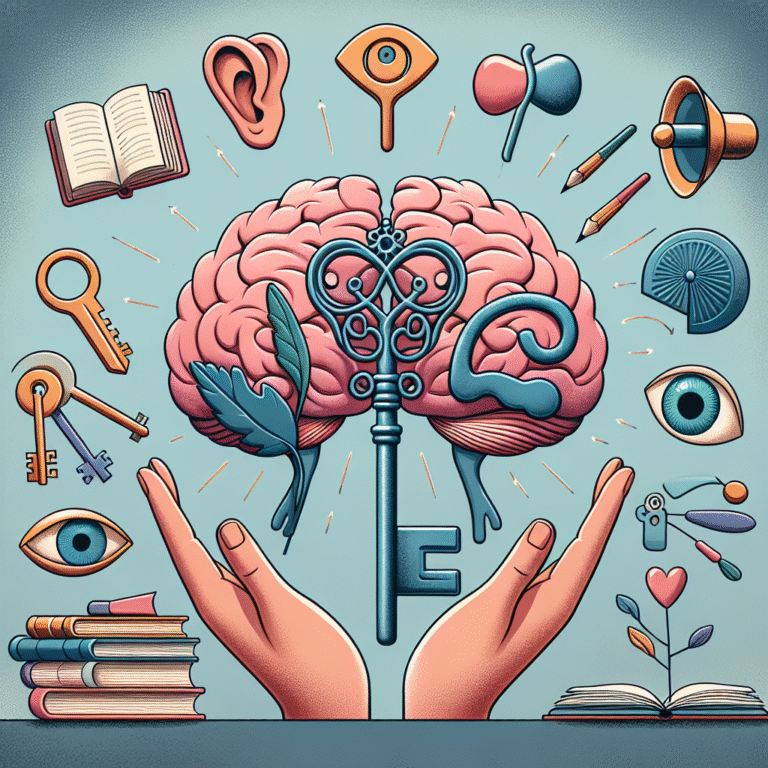
Understanding Dyslexia: Essential Strategies for Accurate Diagnosis
Introduction
Imagine a world where the love for reading and writing is overshadowed by the struggle to decode letters on a page. For millions, this is the daily reality due to dyslexia—a complex learning difference that affects how individuals process language. It is crucial not only to understand dyslexia for what it is but also to grasp the effective strategies for accurate diagnosis. This understanding provides individuals, educators, and clinicians with the necessary toolkit to foster successful interventions and support systems. In this comprehensive article, we will delve deep into the nuances of dyslexia, showcase case studies, and equip you with proven strategies to ensure accurate diagnosis. Let’s embark on this enlightening journey together.
What is Dyslexia?
Dyslexia is often characterized as a learning disorder that primarily affects reading skills. Those with dyslexia may struggle with spelling, word recognition, and decoding abilities, which are fundamental components of reading. Consequently, dyslexia is not indicative of a person’s intelligence; many individuals with dyslexia possess average or above-average intelligence. Understanding dyslexia as a variation in cognitive processing rather than a deficit allows us to shift our perspective and approach effectively.
Key Characteristics of Dyslexia
- Phonological Awareness: Difficulty with the sounds in words.
- Reading Fluency: Slow and labored reading.
- Spelling Challenges: Frequent spelling mistakes and inconsistent spelling strategies.
- Comprehension Issues: Difficulty understanding what is read.
Understanding dyslexia in this manner is vital for developing effective strategies for accurate diagnosis.
The Importance of Early Diagnosis
Early diagnosis is crucial when it comes to supporting individuals with dyslexia. Research shows that the earlier dyslexia is identified, the sooner effective interventions can be implemented, leading to improved academic outcomes.
Signs of Dyslexia in Early Childhood
Identifying signs of dyslexia can begin as early as preschool. Here are some early indicators:
- Trouble rhyming or recognizing letters.
- Delayed speech development.
- Difficulty learning new words.
By understanding these signs, parents and educators can pursue effective strategies for accurate diagnosis early on.
Effective Strategies for Accurate Diagnosis
Accurate diagnosis of dyslexia often requires a multifaceted approach. Here are some key strategies:
1. Comprehensive Evaluations
A thorough assessment is paramount for an accurate diagnosis. This typically includes:
- Standardized Tests: Tools like the Woodcock-Johnson Tests of Cognitive Abilities can assess various aspects of reading, including phonemic awareness and word recognition.
- Developmental History: Gathering information about the individual’s reading and writing experiences can provide context.
- Classroom Observations: Noting academic performance and peer interactions can reveal patterns that suggest dyslexia.
2. Collaboration with Educators and Specialists
Involving teachers and educational specialists can reveal insights into a child’s learning style and challenges. Educational professionals are trained to notice signs and can provide critical information regarding:
- Classroom performance.
- Reading habits and preferences.
- Interaction with peers.
This collaborative approach supports the understanding of dyslexia and paves the way for effective strategies for accurate diagnosis.
3. Use of Technology
The use of technology can enhance diagnostic measures. Tools that assess reading fluency and comprehension can offer real-time analysis of an individual’s strengths and weaknesses. These could include:
- Reading software: Programs that measure speed and comprehension.
- Apps for phonemic awareness: Interactive activities that evaluators can use to assess skills in a more engaging manner.
4. Parental Input
Parents can provide invaluable insights into their child’s reading habits at home, highlighting any discrepancies observed in different environments. Keeping a reading log or noting challenges can strengthen diagnostic precision.
Table: Key Components of a Comprehensive Evaluation
| Component | Description |
|---|---|
| Standardized Tests | Evaluate literacy skills through established metrics. |
| Developmental History | Contextual background for understanding individual needs. |
| Classroom Observations | Insights into daily performance and interaction. |
| Parental Input | Observations from home regarding reading challenges. |
Case Studies Illustrating Effective Diagnosis
Case Study 1: Mia’s Journey
Mia, a bright eight-year-old, struggled significantly in her second-grade reading assessments. Teachers observed her reluctance to engage in reading activities. After involving a reading specialist, a comprehensive evaluation revealed she had dyslexia.
Analysis: This case illustrates the importance of teacher observation combined with expert evaluation to understand and diagnose the challenges.
Case Study 2: Jake’s Multidimensional Evaluation
Jake, a high school freshman, had always performed well academically except in reading. Through standardized testing and multiple interviews with educators and parents, a clearer picture of his strengths and weaknesses emerged. He was diagnosed with a mild form of dyslexia.
Analysis: Here, the multidimensional approach to evaluation highlighted how accurate diagnosis can steer tailored support in a high school setting.
Understanding the Emotional Impact of Dyslexia
Beyond academic struggles, individuals with dyslexia may face emotional and social challenges. Feelings of frustration and low self-esteem can accompany the struggle to keep up with peers. Understanding these emotional facets is essential for creating a supportive environment, enhancing effective strategies for accurate diagnosis, and providing holistic interventions.
Creating a Supportive Environment
- Encouragement: Reinforce the child’s strengths and areas where they excel.
- Empathy: Foster an understanding of their struggles among peers and educators.
- Educational Support: Implement Individualized Education Programs (IEPs) or 504 Plans that cater specifically to their learning needs.
Conclusion
Understanding dyslexia and implementing effective strategies for accurate diagnosis necessitate a blend of awareness, collaboration, and compassion. By confronting dyslexia with informed strategies, we can transform not just how we diagnose this condition, but how we empower those affected by it. Each child’s journey with dyslexia is unique, and recognizing it early through effective diagnostic measures will pave the way for lasting academic and personal success.
Let’s inspire change by advocating for continuous education on dyslexia, supporting affected individuals, and fostering environments where everyone has the opportunity to thrive.
FAQs Section
1. What are the first signs of dyslexia to look out for?
Common signs include difficulty with phonological awareness, delayed speech development, and trouble with word recognition.
2. How is dyslexia diagnosed?
Dyslexia is diagnosed through a combination of standardized tests, developmental history, classroom observations, and parental input.
3. Can dyslexia be outgrown?
While dyslexia cannot be outgrown, with effective intervention and strategies, individuals can learn to manage their symptoms successfully.
4. How can parents support their child who has dyslexia?
Parents can create a supportive home reading environment, reinforce their child’s strengths, and actively involve themselves in school-based interventions.
5. At what age can dyslexia be diagnosed?
Dyslexia can often be diagnosed as early as preschool, but comprehensive evaluations are typically more effective once the child reaches school age.
6. What resources are available for individuals with dyslexia?
Numerous resources exist, including specialized tutoring programs, support groups, and online tools designed to assist individuals in managing dyslexia.
This engaging exploration of "Understanding Dyslexia: Essential Strategies for Accurate Diagnosis" invites readers to think deeply about dyslexia and how collaborative efforts can lead to successful outcomes for those affected. By emphasizing the need for comprehensive evaluations, emotional support, and understanding, we can integrate the knowledge necessary to foster a more inclusive and empathetic educational landscape.






